What is USES?
USES (UltraSound Evaluation of Swallowing) is a dynamic ultrasonic procedure that provides a direct view of the oral and pharyngeal functions during swallowing.
USES allows speech and language therapists (SLTs) to observe the oral cavity and oropharynx in the midline position. In the USES image, SLTs could observe the coordination of the mandible, tongue and hyoid bone and use it to evaluate bolus preparation, bolus propulsion, and oral transit time. The movement of the hyoid bone in relation to the position of the mandible is currently being studied as a proxy measure for the pharyngeal stage of swallowing.
What does USES involve?
During the procedure, the client will be sitting in an upright position with the ultrasound probe placed under the chin. Ultrasound gel is used on the surface of the probe to enhance the image. The probe might be handheld or stabilised utilising a headset. The mandible, tongue, hard palate and hyoid are visible on the ultrasound and can be observed in the ultrasound image.
Normal food and liquid of different textures, consistencies and volumes can be used to assess the swallowing function, and the coordination of the oral and pharyngeal structures can be observed in USES. The examination is recorded and can be reviewed later.
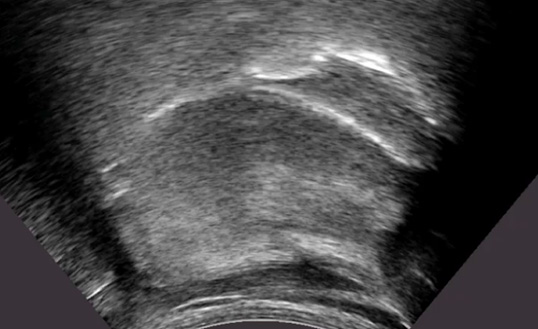
Unique components in our USES setup
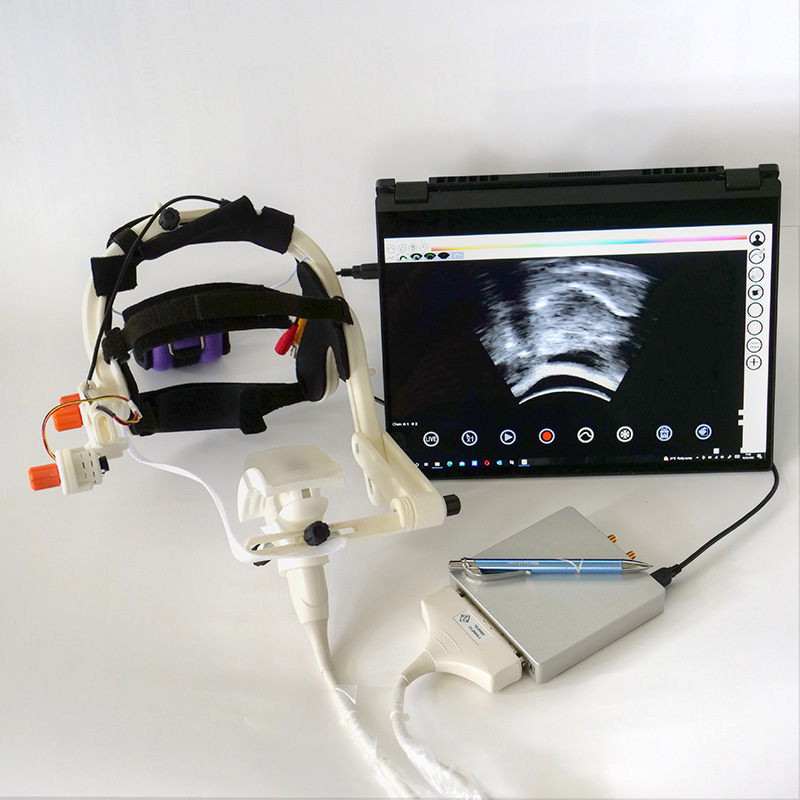
Pocket-sized micro ultrasound system
- A fully CE certified diagnostic ultrasound system
- Standard B-mode
- Frame rates between 80 and 119 frames per second
- 2-5MHz 60mm convex probe
- Operates using any Windows laptop or tablet
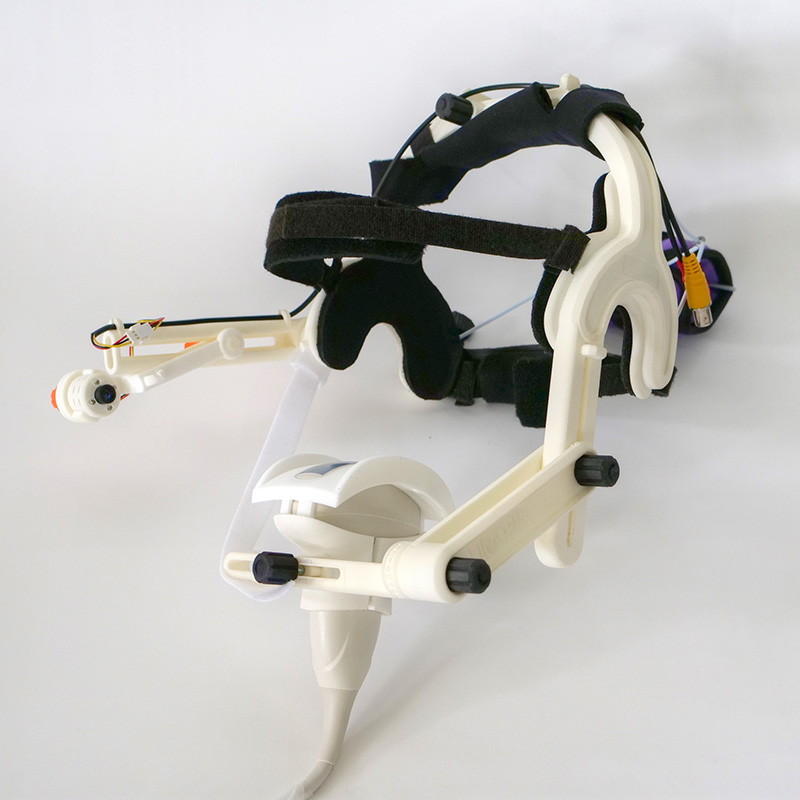
Headset
- A probe stabilisation headset (Ultrafit, Articulate Instruments, Design by Anna Matosova and Lorenzo Spreafico) can be used to hold the ultrasound probe in place.
- The use of a headset improves the reliability of data collection by ensuring consistent contact between the probe surface and skin, which can be challenging to achieve when handheld, especially in some clinical populations, such as those with movement disorders.
- The headset with the ultrasound probe attached and counterweight for the probe added to the back of the headset altogether weigh about 600g. There could be an issue of fatigue after prolonged use, but in our experience, most healthy participants report becoming acclimatised and wear the headset for 30 minutes without it significantly impacting their comfort or ability to participate in the assessment.
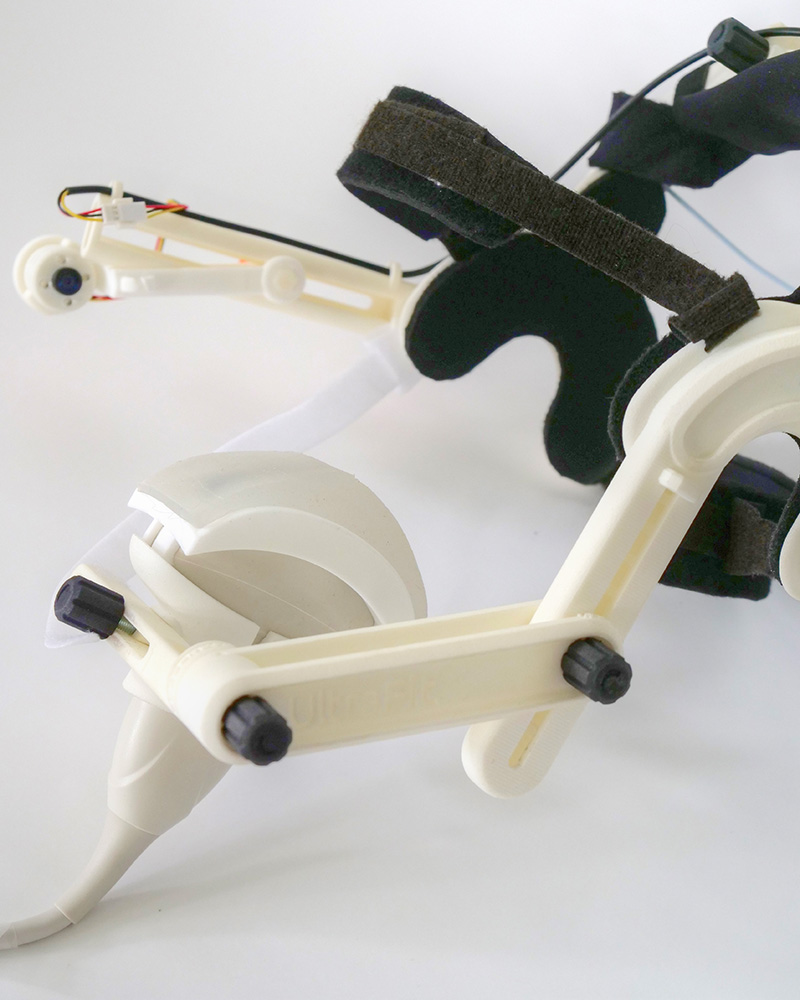
Gel pad
- A customised contoured gel pad is placed between the probe and the chin to improve the fit to the neck contour and so help the probe to maintain contact with the chin throughout the swallow.
- The soft surface of the gel pad improves the comfort level of the procedure.
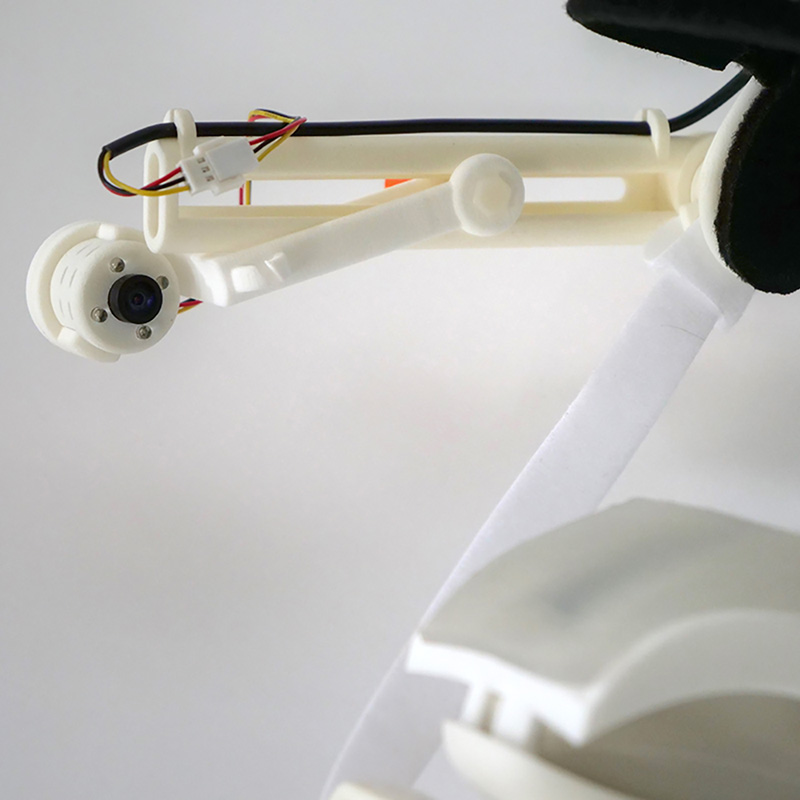
Camera
- An optional lightweight NTSC micro-camera can be mounted onto the headset, offering a profile image of the lips and chin.
- This helps in identifying the beginning of the pre-swallow movement and early stages of oral preparation.
Benefits
USES is a relatively non-invasive procedure compared to other common instrumental evaluations of swallowing, such as Videofluoroscopic Study of Swallowing (VFSS) and Fibreoptic Endoscopic Examination of Swallowing (FEES). No radiation is involved, and natural food and drink can be used as part of the assessment without any modification. In addition, the pocket-sized system is highly portable and may be easily carried between different locations. It is also a low-cost system that can potentially be implemented in various clinical settings.
Risks
Ultrasound imaging does not involve radiation exposure. Instead, high-frequency sound waves are used to generate an image of the body. No known risks are associated with the sound waves used in ultrasound imaging.
USES does not cause any pain, although the placement of the ultrasound probe under the chin while swallowing or the weight of the headset might cause slight discomfort in some cases.
Ultrasound Evaluation of Swallowing
Our project, Swallow Vision, aims to develop the use of ultrasound as an additional tool for the clinical assessment and management of swallowing disorders.
In this video, we describe how ultrasound evaluation of swallowing works and what it's like to participate in our research.
A swallowing disorder, known medically as dysphagia, can affect people for many reasons, such as stroke, Parkinson's, or head and neck cancer.
Speech and language therapists are involved in assessing and managing swallowing disorders. X-rays or endoscopy are sometimes used to investigate swallowing problems and, in some cases, to support people to improve their swallowing function.
Building on the latest research, we believe ultrasound could also be developed as a clinical tool to support the assessment and management of swallowing problems.
